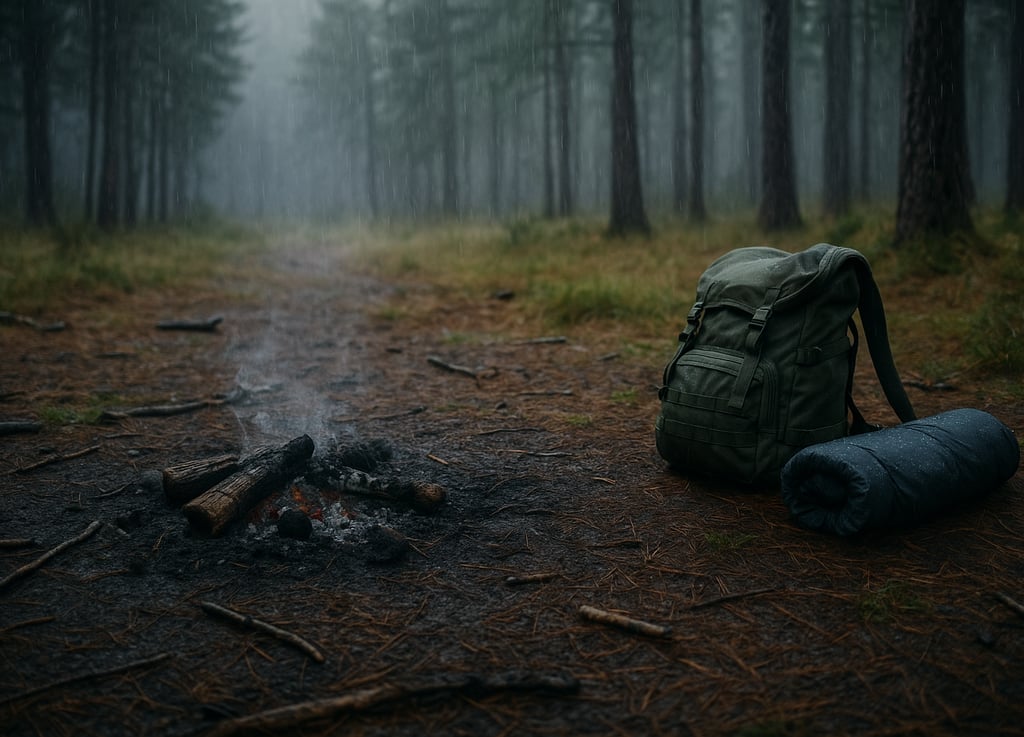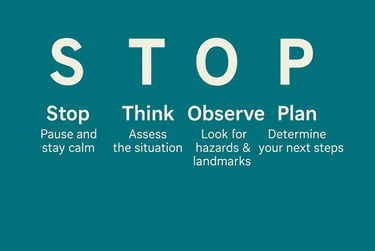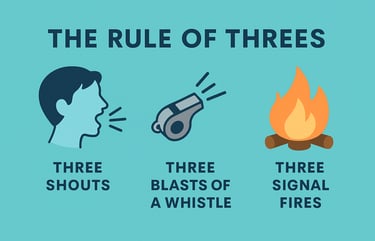What to Do If You’re Lost in the Wilderness: Navigation Strategies to Find Your Way Back
Lost in the wilderness? Discover practical navigation tips and survival strategies to help you stay calm, get oriented, and find your way back to safety—even without GPS.


What to Do If You’re Lost in the Wilderness: Navigation Strategies to Find Your Way Back
Stay Calm and Assess the Situation
The first and most important step if you realize you're lost in the wilderness is to stop moving. Panic can cloud your judgment, so take a few deep breaths and try to assess your surroundings. Look for familiar landmarks, listen for distant sounds like traffic or running water, and take note of the time of day and weather conditions. Many people worsen their situation by rushing blindly in the wrong direction. Slowing down increases your chances of making smart decisions and conserving energy.
Use the STOP Method
A widely recommended survival technique is the STOP method: Stop, Think, Observe, and Plan. When you stop, resist the urge to walk in circles. Instead, sit down and think carefully about your last known location. Were you on a marked trail? Did you cross any creeks or ridgelines? Then observe your surroundings. Look for trail signs, broken branches, or other indicators of human travel. Lastly, make a plan. Whether you stay put or move depends on your assessment and available resources. If you’ve practiced basic orienteering skills, now’s the time to use them — identifying landmarks and checking elevation changes can help you reorient.
Retrace Your Steps If It's Safe to Do So
If you haven't traveled far from your last known location, and it’s safe to do so, consider retracing your steps. Look behind you for footprints, scuffed soil, snapped twigs, or familiar rock formations. Be careful not to wander further unless you're confident in your direction. If you're unsure, it's often better to stay put and make yourself easy to spot for search and rescue.
Use Natural Navigation Clues
Even without a map or compass, nature offers some tools to help you orient yourself. The sun rises in the east and sets in the west, which can help determine general direction if it's visible. Moss often grows on the northern side of trees in the northern hemisphere, although this isn’t a guarantee. Flowing water usually leads downhill and may lead to roads or inhabited areas. These clues can help you choose a sensible direction if you must move. These techniques and especially navigating with the sun and stars can be surprisingly effective when you’re missing a compass.
Mark Your Movements Clearly
If you decide to travel, make sure to leave markers as you go. Break small branches at eye level, stack small cairns, or use rocks to make directional arrows on the ground. This not only helps rescuers track you, but it also allows you to backtrack if needed. Just don’t rely on these methods as your sole navigation strategy, use them as a backup safety net.
Signal for Help
Making yourself visible is key when you’re waiting for help. Choose an open area with good visibility if you stop moving. Bright clothing, emergency whistles, mirrors, or even a smoky fire can be lifesaving signals. Three of anything — three shouts, three blasts of a whistle, or three signal fires — is a universal distress signal.
Staying in one place makes it easier for search and rescue teams to locate you, especially if they’re using aircraft or drones. And knowing how to signal for help with sound, light, or movement increases your chances of being rescued quickly.
Know When to Stay Put
In many cases, the safest choice is to stay where you are. If you’ve already signaled for help, have shelter, and aren’t in immediate danger, waiting for rescuers is often your best bet. Moving through unfamiliar terrain in poor weather or at night can lead to injury or further disorientation. Prioritize staying warm, hydrated, and visible. And if you’re injured, knowing how to treat common wilderness injuries could buy you crucial time until help arrives.
Prepare Before You Head Out
While this may not help you if you're already lost, it's a reminder for the future: always carry basic gear like a map, compass, whistle, emergency blanket, and headlamp when venturing into the backcountry. Let someone know your route and expected return time. Being prepared is the best way to prevent getting lost, or to recover quickly if you do.




© 2025. All rights reserved About | Privacy Policy | Terms and Conditions | Affiliate Disclosure | Disclaimer


